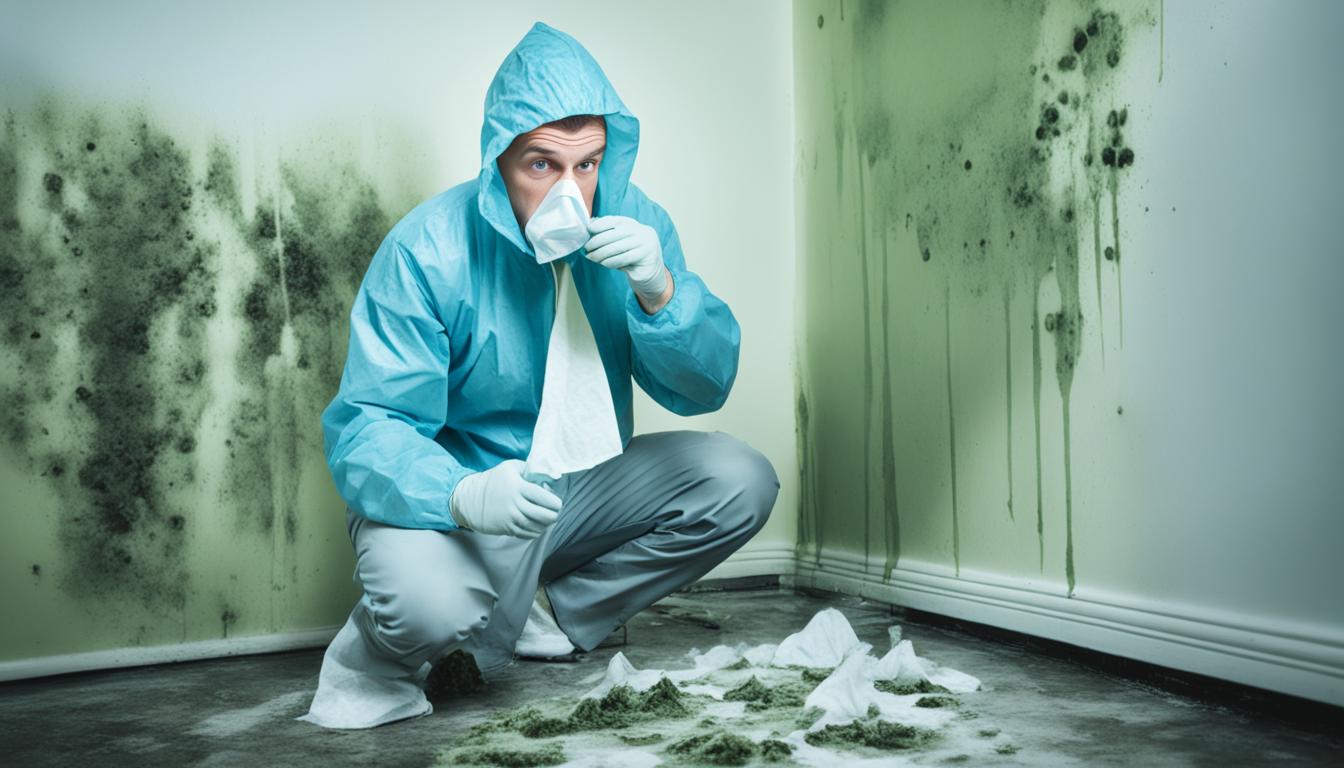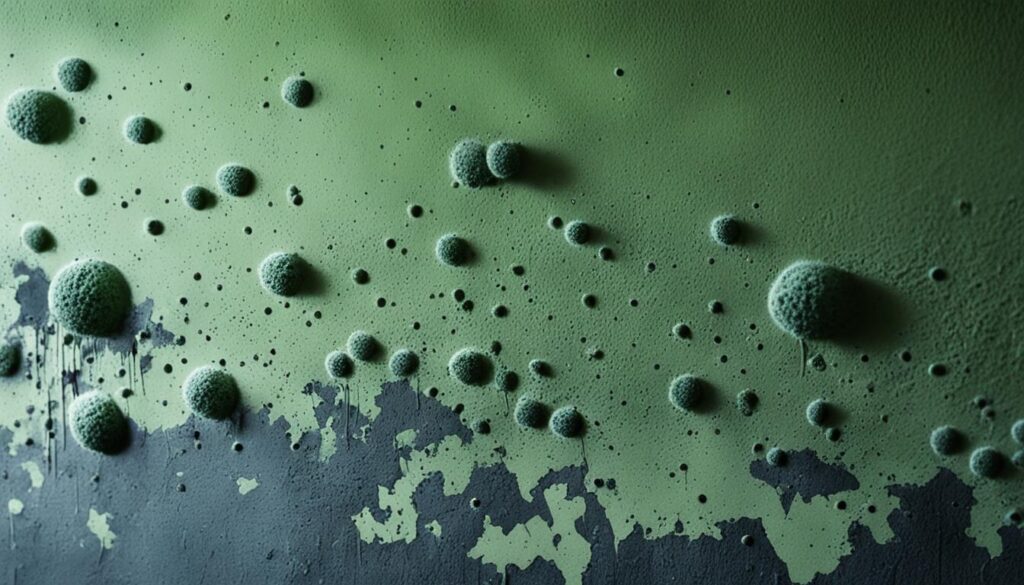
Toxic Mold Exposure Risks and Safety Tips
Welcome to our informative guide on toxic mold exposure risks and safety tips. In this article, we will explore the potential health hazards associated with toxic mold and provide you with valuable insights and practical advice to protect your home and well-being.
Toxic mold can pose a significant threat to your health and the structural integrity of your property. Exposure to toxic mold can lead to a range of adverse health effects, including respiratory issues, allergies, and even more severe complications for individuals with weakened immune systems.
By understanding the risks and implementing appropriate safety measures, you can effectively mitigate the dangers of toxic mold. In the following sections, we will discuss the characteristics of toxic mold, its potential health hazards, effective strategies for mold prevention, and the steps involved in mold remediation.
Whether you are a homeowner or a renter, being proactive in preventing and addressing the presence of mold is crucial for maintaining a healthy living environment. By taking the necessary precautions and following the recommended safety tips, you can safeguard yourself and your loved ones from the harmful effects of toxic mold exposure.
Key Takeaways:
- Exposure to toxic mold can have detrimental effects on respiratory health and overall well-being.
- Toxic mold can trigger allergies and pose more severe health complications, particularly for individuals with weakened immune systems.
- Implementing effective strategies for mold prevention, such as moisture control and proper ventilation, is crucial in maintaining a mold-free environment.
- If you suspect the presence of mold in your home, it is important to seek professional mold assessment and remediation services.
- Regular inspections and prompt action are vital in preventing mold growth and ensuring a safe living space.
Understanding Toxic Mold and Its Health Hazards
To fully comprehend the potential dangers of toxic mold, it is important to explore its characteristics and the wide range of health hazards it can pose. Toxic mold, also known as black mold or Stachybotrys chartarum, releases mycotoxins into the air, which can have detrimental effects on individuals’ well-being.
The inhalation or direct contact with these mycotoxins can lead to a variety of health issues, particularly affecting respiratory health. Prolonged exposure to toxic mold has been linked to symptoms such as coughing, wheezing, shortness of breath, and chronic sinusitis. In some cases, it can even exacerbate asthma and cause severe allergic reactions.
“Toxic mold exposure can lead to a multitude of health problems, ranging from mild respiratory issues to more serious complications,” warns Dr. Emily Adams, a renowned allergist and expert in mold-related illnesses.
In addition to respiratory symptoms, toxic mold exposure can also manifest as neurological symptoms, including headaches, memory problems, and difficulty concentrating. Individuals with weakened immune systems, such as those undergoing chemotherapy or individuals with HIV/AIDS, may be more susceptible to the adverse effects of toxic mold exposure.
The Potential Health Hazards of Toxic Mold Include:
- Respiratory issues, including coughing, wheezing, and shortness of breath
- Exacerbation of asthma and allergies
- Chronic sinusitis and nasal congestion
- Neurological symptoms such as headaches and memory problems
- Weakened immune system
“It is crucial for individuals to recognize the health risks associated with toxic mold and take appropriate measures to safeguard their homes and well-being,” advises Dr. Adams.
Understanding toxic mold and its potential health hazards is the first step in protecting yourself and your loved ones. If you suspect the presence of toxic mold in your home, it is essential to seek professional mold remediation services to minimize health risks and create a safe environment.

Stay tuned for the next section as we dive into effective strategies for preventing mold growth and handling mold remediation in your home.
Effective Strategies for Mold Prevention and Remediation
When it comes to mold prevention and remediation, proactive measures are crucial. Taking prompt action to prevent mold growth and addressing any existing mold issues promptly can help protect your home and your family’s health. In this section, we will discuss effective strategies for mold prevention and outline the steps involved in mold remediation.
Mold Prevention Strategies
Moisture Control: Moisture is a primary factor in mold growth. Ensure that your home remains dry by fixing any leaks promptly. Regularly inspect areas prone to moisture, such as basements, attics, and bathrooms, and address any signs of dampness immediately.
Proper Ventilation: Adequate ventilation is essential for reducing moisture levels and preventing mold. Use exhaust fans in bathrooms and kitchens and ensure that your home has proper ventilation systems in place. This will help remove excess humidity from the air and discourage mold growth.
Regular Inspections: Regularly inspect your home for signs of mold, especially in areas with high humidity or water exposure. Pay attention to musty odors, water stains, or discoloration on walls, ceilings, or floors. Promptly address any signs of mold growth to prevent further spread.
Mold Remediation Process
If you discover mold in your home, it’s important to handle the remediation process properly to ensure effective removal. Here is a general outline of the steps involved:
- Assessment: Begin by identifying the extent of the mold problem. This can be done through a visual inspection or by hiring a professional mold assessment service.
- Containment: To prevent the spread of mold spores, establish containment measures such as sealing off the affected area and using plastic sheeting.
- Removal: Remove any contaminated materials that cannot be salvaged, such as heavily affected drywall or carpeting.
- Cleaning: Thoroughly clean surfaces using appropriate mold remediation products. This step helps eliminate any remaining mold spores and ensures a healthier environment.
- Drying: Properly dry the affected area to prevent future mold growth. Use dehumidifiers or fans to speed up the drying process.
- Prevention: Take steps to prevent future mold growth by addressing the underlying cause, such as fixing leaks or improving ventilation.
Remember, if you’re unsure or dealing with extensive mold growth, it’s best to consult a professional mold remediation service for thorough and safe removal.

Conclusion
In conclusion, being aware of the risks associated with toxic mold exposure is crucial for maintaining a safe and healthy living environment. Throughout this article, we have explored the health hazards that toxic mold can pose, including respiratory issues and allergies. We have also provided valuable safety tips to help you protect your home and well-being effectively.
Remember, prevention is key when it comes to mold growth. By implementing practical strategies like moisture control, proper ventilation, and regular inspections, you can significantly reduce the chances of mold infestation in your property. Additionally, if you suspect mold in your home, it is vital to seek professional help for a thorough assessment and remediation.
If you are in the Miami area and require professional mold assessment services, we recommend contacting Fix Mold Miami at 305-465-6653. Their team of experts will provide you with comprehensive assessment and remediation solutions to address any mold concerns you may have.




